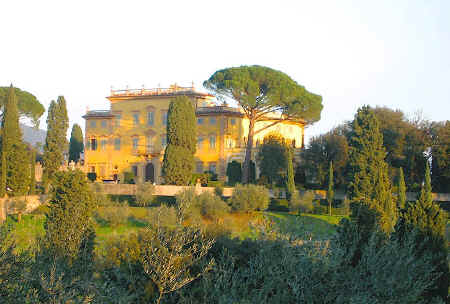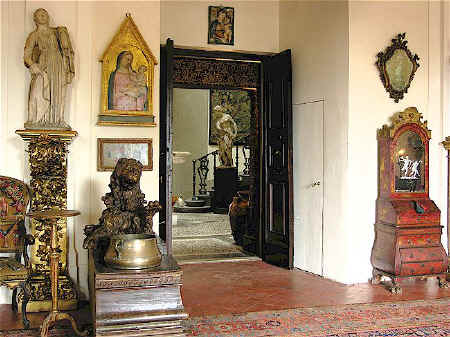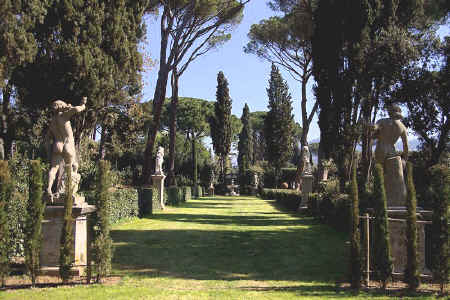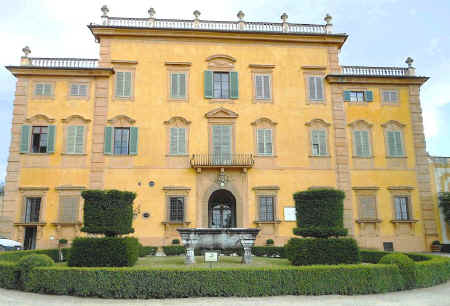|
Sir Harold Acton (1904 - 1994) was an author, aesthete and Anglo-Florentine who lived his
later life in the family villa of La Pietra, located on via
Bolognese, a mile outside the walls of Florence. Acton was a descendent
of the Acton family that was prominent in Naples under Ferdinand IV.
Acton's father was an art and antiques dealer who married into the
wealthy Mitchell banking family of Chicago. His wife's fortune allowed him to
buy and furnish Villa La Pietra. The original villa was built in the 15
C by the Macinghi family. It is named after a milestone which used to mark its distance from Florence. It was bought in 1460 by the Florentine banker Francesco Sassetti, manager of the Medici Bank and member of the famous Florentine Sassetti family.
In 1491, Francesco Sassetti's heirs sold the villa to Piedro di Niccolo Capponi of the Capponi family. Cardinal Luigi Capponi was an important member of the Capponi family and was a director of the Vatican Library under Pope Innocent X's papacy. Luigi Capponi made substantial renovations to the villa in the
17 C, adding the baroque exterior, thought to be designed by Carlo Fontana. In 1908 the villa was bought by Arthur Acton and his wife
Hortense Mitchell, the parents of Harold Acton.

Villa La Pietra and its grounds
Originally, Villa La Pietra was the site of a Renaissance garden. However, the gardens were entirely redesigned when it was landscaped in the
English style durning the 19 C. When Arthur Acton and his wife took ownership of the villa, they recreated a garden in the original Italian Renaissance style, a task later continued by
Harold Acton. The villa is furnished entirely in antique style - even in
the early 20 C, there was no modern furniture inside it.

An interior view of Villa La Pietra
Harold Acton went to Eton in 1918, forming part of an extremely talented
generation of literary Etonians including Eric Blair (George Orwell), Cyril Connolly, Robert Byron, Alec Douglas-Home, Ian Fleming, Brian Howard, Oliver Messel, Anthony Powell, Henry Yorke
(Henry Green). (Kenneth Clarke was his contemporary at prep school.)
Acton published his first poems while he was still at Eton. He was
already famous while a student at Oxford from 1923, during which time he
published two further volumes of poetry. He haunted the literary salons
of London during the 1920's while becoming a friend of Norman Douglas in
Florence during the same period. He spent the years 1932 to 1939 in
Peking where he translated Chinese poetry. He left only when forced to
do so by the Japanese occupation. After war service in the RAF, he moved permanently to La
Pietra where he restored the damage done during its occupation by the
Germans. During the second part of his life, Acton published historical
works, a biography of his friend and exact contemporary Nancy Mitford,
as well as his own autobiography, "Memoirs of an Aesthete".

One of the prospects of the garden at Villa La
Pietra
Acton left Villa La Pietra and his
fortune to New York University. Villa La Pietra and its 57 acre grounds
remain intact and are open to the public by appointment and to the New York University students residing in Florence. The garden consists of green lawns, hedges and ornamental
statues. The arches, temples and statues scattered around the garden are
placed intentionally to draw the eye to specific views, in Renaissance
style.
|
